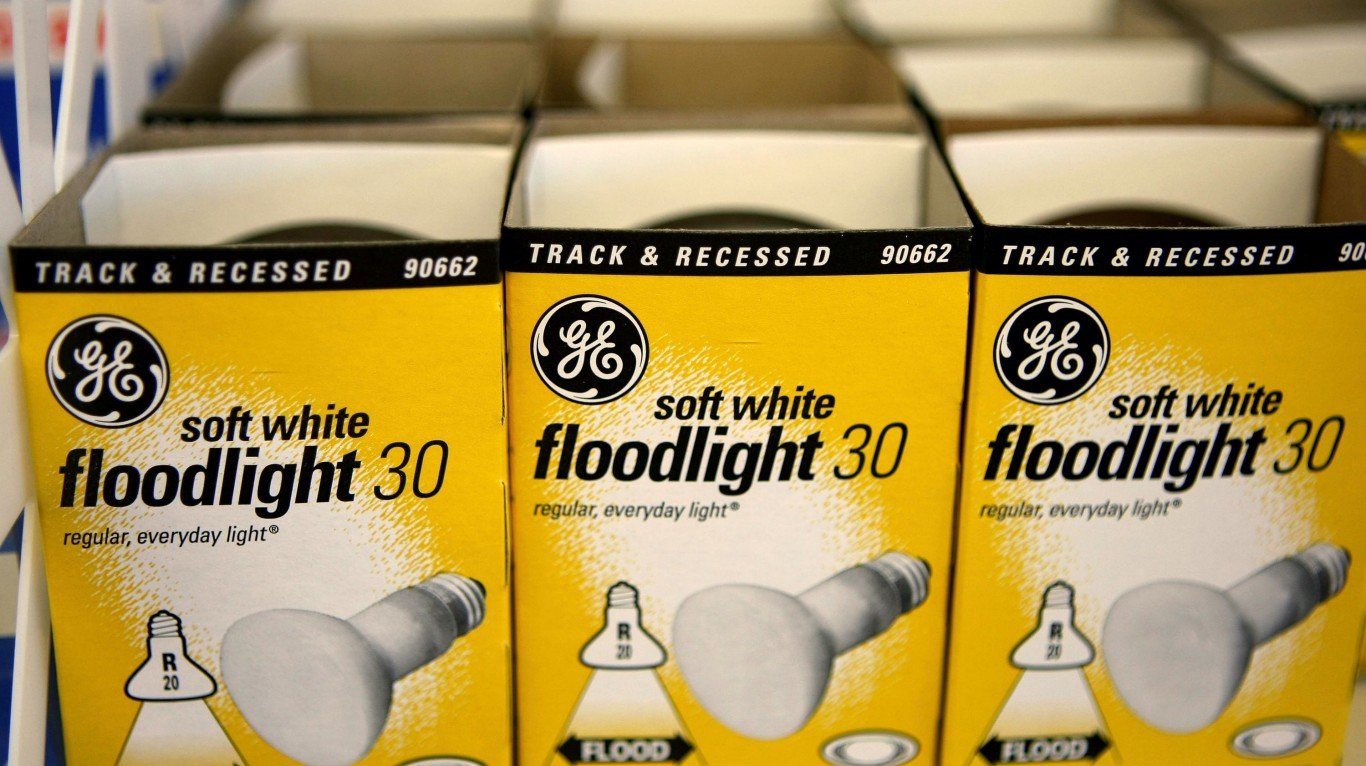

In its detailed 2020 outlook released Wednesday morning, General Electric Co. (NYSE: GE) provides additional information related to its skeletal outlook announced when the company reported fourth-quarter results in January. The company stuck by its forecast earnings per share (EPS) of $0.50 to $0.60 for the year and the forecasts for GE Industrial revenues to rise in the low-single-digit range with profit margins flat to up 75 basis points organically. GE Industrial free cash flow remains pegged at $2 to $4 billion.
The company is also targeting a GE Industrial net debt-to-EBITDA ratio of less than 2.5 times, as well as a less than four-to-one debt-to-equity ratio for GE Capital, in 2020.
The detailed forecast also includes GE’s estimate of the first-quarter impact of the coronavirus outbreak. The company expects free cash flow at GE Industrial to take a hit of between $300 million and $500 million in the quarter. Operating profit in the division is forecast to take a hit of $200 million to $300 million in the quarter. GE did not estimate the impact beyond the first quarter.
Among other headwinds, the sale of BioPharma and the disposition of Baker Hughes will cut into earnings and cash flow throughout the year. The troubled Power segment will continue to lose money. The Renewables segment is expected to report negative free cash flow both this year and next, while margins (which closed 2019 at a negative 4.3%) are expected to improve but remain negative in 2020 before breaking even in 2021.
GE Capital is expected to post a 2020 loss of $300 to $500 million and finish the year with about $105 billion in reported assets, excluding liquidity of around $14 billion.
CEO Larry Culp commented:
We entered this year with momentum having diligently addressed our most pressing issues and reset our foundation in 2019. … We remain focused on our priorities of solidifying our financial position, continuing to strengthen our businesses, and driving long-term profitable growth as our multi-year transformation accelerates.
GE is assuming that production of its 737 Max engines will track with Boeing’s estimated return to service in mid-year. Free cash flow in the Aviation segment was $4.4 billion last year, and GE has forecast that to be flat to up this year and higher in 2021.
The company’s Healthcare segment generated $2.5 billion in free cash flow last year and is expected to be higher this year and to increase again next year, but GE did not provide either a percentage or a total. Along with Aviation’s free cash flow of $4.4 billion, the company as a whole generated $2.3 billion in free cash flow last year. The Power segment is expected to improve its negative $1.5 billion free cash flow total in 2019, but the improvement won’t push it into positive territory until 2021. The Renewables segment posted negative free cash flow of $1 billion last year and that total will be lower this year though it won’t turn positive until 2022.
There was no big news in the GE announcement, so after a bit of excitement in Wednesday’s premarket, shares traded up about 0.5% at $10.94. The stock’s 52-week range is $7.65 to $13.26, and the consensus 12-month price target is $13.52.
Sponsored: Want to Retire Early? Here’s a Great First Step
Want retirement to come a few years earlier than you’d planned? Or are you ready to retire now, but want an extra set of eyes on your finances?
Now you can speak with up to 3 financial experts in your area for FREE. By simply clicking here you can begin to match with financial professionals who can help you build your plan to retire early. And the best part? The first conversation with them is free.
Click here to match with up to 3 financial pros who would be excited to help you make financial decisions.
Thank you for reading! Have some feedback for us?
Contact the 24/7 Wall St. editorial team.
 24/7 Wall St.
24/7 Wall St.


